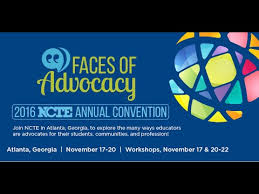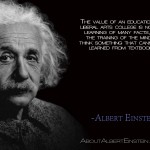“Cultivating Engagement in Online” the description read in the National Council of Teachers of English program, but as the professors from Salt Lake Community College in Utah began, they quickly explained that the focus of their talk had shifted due to a recent decision by their administration to restructure the first-year writing courses. In light of the readings we had been assigned concerning the quality of online education, this switch in emphasis could not have been better timed.
Maenhardt and Bogle, the presenters, have been teaching at the college for over a decade and both have been teaching fully online for at least six years. The decision to create courses as collaborative teams came as a directive that, while not totally unexpected, demanded much of the professors who had previously worked autonomously within the boundaries of guidelines determined by the English department in face-to-face courses. As the readings indicate to ensure quality, the restructuring was aligned with the college’s mission to engage and support all students, reinforce the values of collaboration, community, and learning, as well as exemplify the vision of an inclusive and transformative experience for every student.
In addition, the teams remained subject to department norming, moved from textbook to OER adoption, (thereby addressing the cost issues that had been cited overwhelmingly as prohibitive during end-of-course student surveys), and utilized a Writing Workshop model, meaning that the students would be required to meet synchronously with their professors through Google Docs collaboration and Adobe Connect to discuss writing projects as they drafted.
Both professors touted the collaborative model as a way to support one another as teachers though they admitted that there need to be some changes made as students were not quite sure who was in charge of their grades with the overlapping of professors to cover the wide variety of “sign-up” sessions online. Furthermore, they felt that some autonomy needed to be returned to the professors. For example, if one professor wanted more choice in topic selection (freshman composition generally covers rhetoric and research to support an argument), he or she should be allowed that. Dr. Maenhardt, for instance, had structured the entire semester around FOOD, but Dr. Bogle had decided that she wanted to allow her students to choose from three topics.
In the final analysis, and as the Salt Lake Community College moves forward, they are making adjustments within the team approach, keeping what works, modifying what doesn’t, based upon students’ commentary and their own observations. The post to the our discussion thread emphasized what emerged loud and clear: the technology infrastructure is a key to success! (As I have found in my own experience with freshmen surveys, often the “likes” and “dislikes” reveal contradictions, the very same activity eliciting “yays” and “nays,” as was the case for these teachers.) This session gives me food for though as I consider my upcoming composition class at Ocean County College in the spring.









